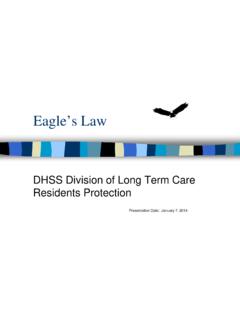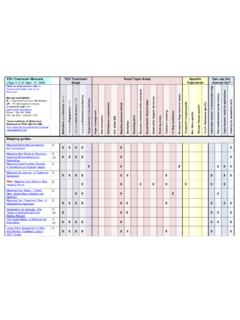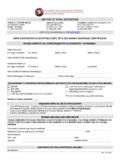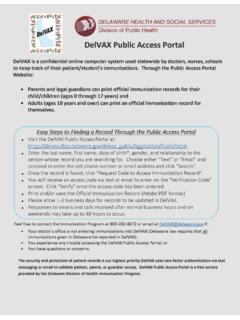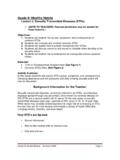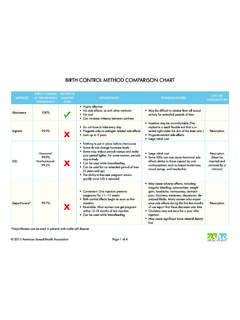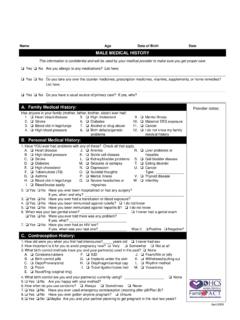Transcription of DIRECT AND INDIRECT DISEASE TRANSMISSION
1 DIRECT AND INDIRECT DISEASE TRANSMISSION . What is DIRECT AND INDIRECT DISEASE TRANSMISSION ? Contact TRANSMISSION is the most common form of transmitting diseases and virus. There are two types of contact TRANSMISSION : DIRECT and INDIRECT . DIRECT contact TRANSMISSION occurs when there is physical contact between an infected person and a susceptible person. INDIRECT contact TRANSMISSION occurs when there is no DIRECT human-to-human contact. Contact occurs from a reservoir to contaminated surfaces or objects, or to vectors such as mosquitoes, flies, mites, fleas, ticks, rodents or dogs. How do infections spread? DIRECT contact infections spread when DISEASE -causing microorganisms pass from the infected person to the healthy person via DIRECT physical contact with blood or body fluids. Examples of DIRECT contact are touching, kissing, sexual contact, contact with oral secretions, or contact with body lesions. INDIRECT contact infections spread when an infected person sneezes or coughs, sending infectious droplets into the air.
2 If healthy people inhale the infectious droplets, or if the contaminated droplets land directly in their eyes, nose or mouth, they risk becoming ill. Droplets generally travel between three and six feet and land on surfaces or objects including tables, doorknobs and telephones. Healthy people touch the contaminated objects with their hands, and then touch their eyes, nose or mouth. What illnesses spread this way? Many illnesses spread through contact TRANSMISSION . Examples are chicken pox, common cold, conjunctivitis (Pink Eye), Hepatitis A and B, herpes simplex (cold sores), influenza, measles, mononucleosis, Fifth DISEASE , pertussis, adeno/rhino viruses, Neisseria meningitidis and mycoplasma pneumoniae. How can one prevent DISEASE TRANSMISSION ? Delaware's Division of Public Health (DPH) recommends frequent and thorough hand washing as the best method to prevent DISEASE TRANSMISSION . DPH also recommends regular disinfection of frequently touched surfaces such as doorknobs, handles, handrails, restroom surfaces, medical instruments, computer keyboards, phones, office supplies and children's toys.
3 Using barriers such as gloves, masks or condoms can help avoid the spread of germs. Many infections can be prevented by keeping healthy with attention to good personal hygiene. For more information: Visit the CDC website: 24/7 Emergency Contact Number: 1-888-295-5156. Revised: 6/2011.


